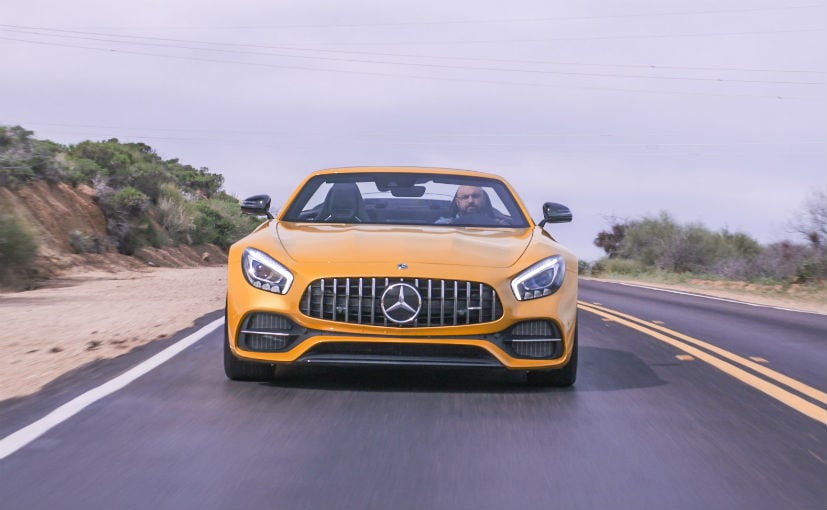
The Mercedes-Benz AMG GT was the first car to be designed and built completely by the AMG division and it was launched internationally over two years ago. Around the world and in India, the AMG GT is the erstwhile replacement for the mighty SLS AMG and obviously, those are quite large shoes to fit into. The AMG GT though has been received well around the world and it even won the Car And Bike 2016 Sportscar Of The Year Award. And now, for the 2017 model year, AMG has decided to freshen it up a little bit with a slightly updated look, more power, more tech and most importantly, a convertible version.
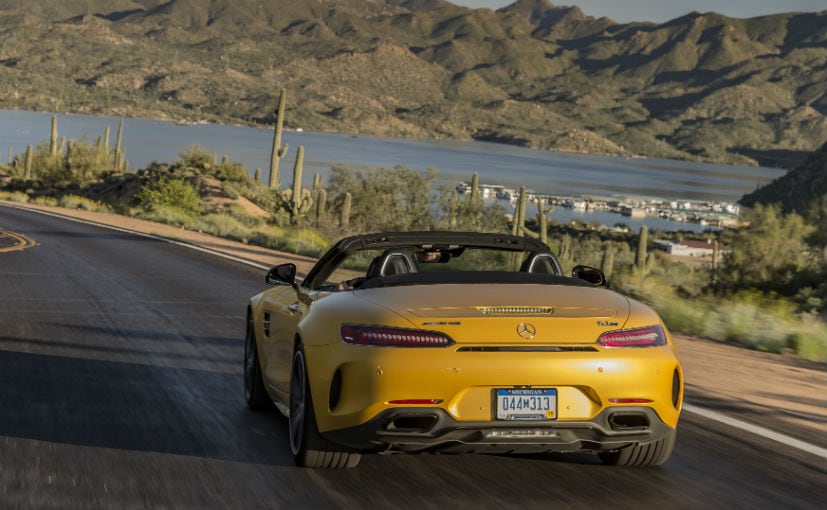
Mercedes-AMG GT C Roadster Rear Design
Mercedes-AMG have also added some new variants to the lineup. And the one we are driving here today is one of those new variants, the AMG GT C. So let us quickly explain where the AMG GT C lies in the grand scheme of things. The coupe version of the AMG GT gets four variants – GT (standard), GT S (the one we get in India), GT C (the model we are driving) and the track bred GT R which comes with the big wing and the bright green signature paintjob. The roadster on the other hand gets only two variants – GT (standard) and the GT C, which is the one we are driving here.

Mercedes-AMG GT C Roadster With Roof Up
So how is the GT C different? Well, for starters, it gets a new front end (all 2017 model year cars get the new front end) that is inspired by the 300SLs that raced in the Carrera Panamericana races in Mexico from the early 1950s in which the likes of the Juan Manuel Fangio and Sir Stirling Moss participated. The new front end is also a lot more aggressive than ever before and aids in aerodynamics by offering small electronically controlled vents behind the grille.
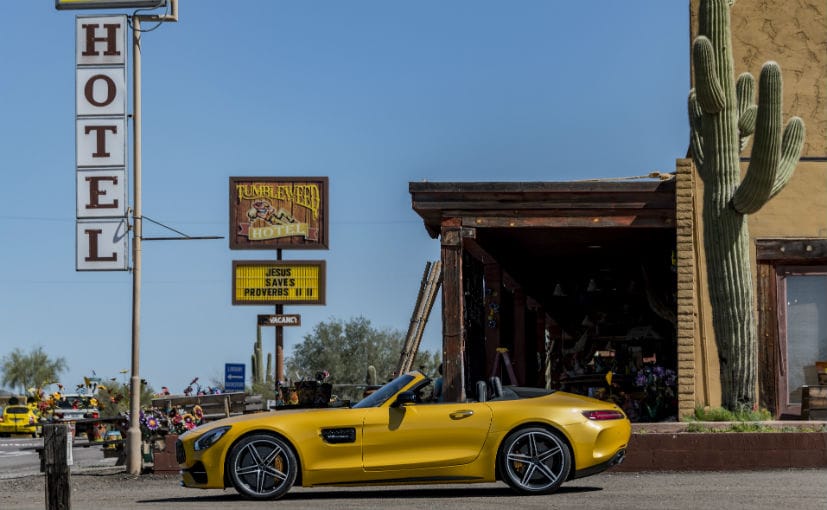
Mercedes-AMG GT C Roadster Side
The GT C also gets wider fenders in the rear that accommodates a wider axle and a wider set of tyres along with new cooling vents in the rear bumper that help keep the brakes and the rear mounted gearbox cool. The AMG GT C roadster though is not just a coupe with a chopped roof. For starters, the windscreen is more sharply raked towards the passenger cabin and the whole windscreen frame sits a tad lower too. And this really helps accentuate the car’s form with the long bonnet and the stubby boot. The electrically operated boot spoiler though is still as is.
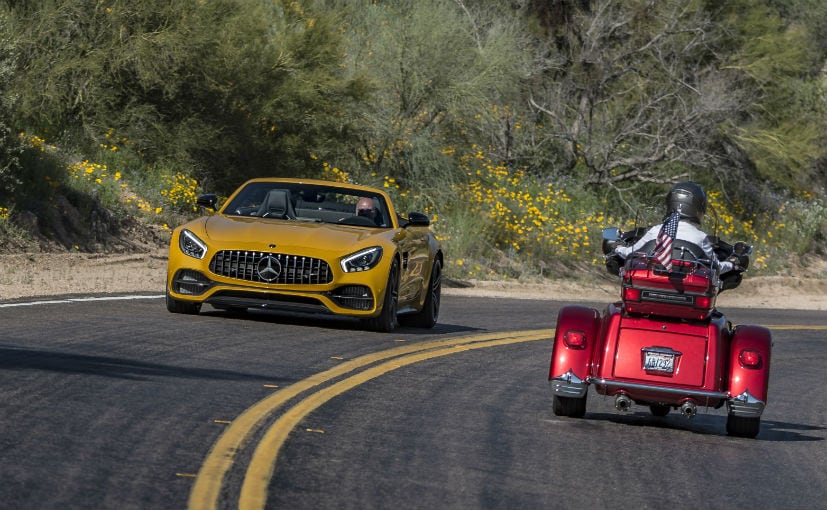
Mercedes-AMG GT C Roadster Review
The roof itself can go up and down by the touch of a button in the car or on the remote in a mere 11 seconds! And the roof is operable up to speeds of 50 kmph. That said, the AMG GT cabriolet does not get a wind deflector like the one you get in the E Class cabriolet.

Mercedes-AMG GT C Roadster
The interior of the AMG GT roadster is as cool as the one on the coupe. Of course, a million miles of sunny skies have replaced the fighter jet-cocooning feel of the coupe. But the quality of everything is still top notch and there is still oodles of carbonfibre everywhere combined with lovely brushed aluminum. That said, my only real annoyance with the GT is sadly still around too. The gear shift is just way too far back to be comfortable especially when you need to get into neutral when in traffic.
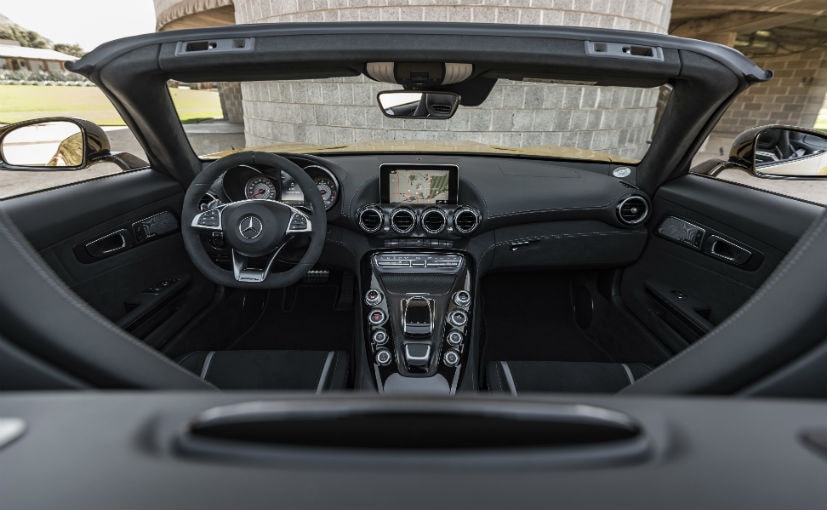
Mercedes-AMG GT C Roadster Interior
Both the standard and the GT C come with a twin turbo 4.0 litre V8. The GT C we are driving today gets 550 bhp and the standard car gets a slightly more modest 470 bhp. Both cars are rear wheel drive and get a 7-speed dual clutch gearbox which is now very responsive as compared to some older AMG units. Power delivery is instant and with the sports exhaust wide open, the AMG GT C’s echaust note can light up every single moment of your day. But what surprises us most is the sheer mechanical grip the AMG GT C has.
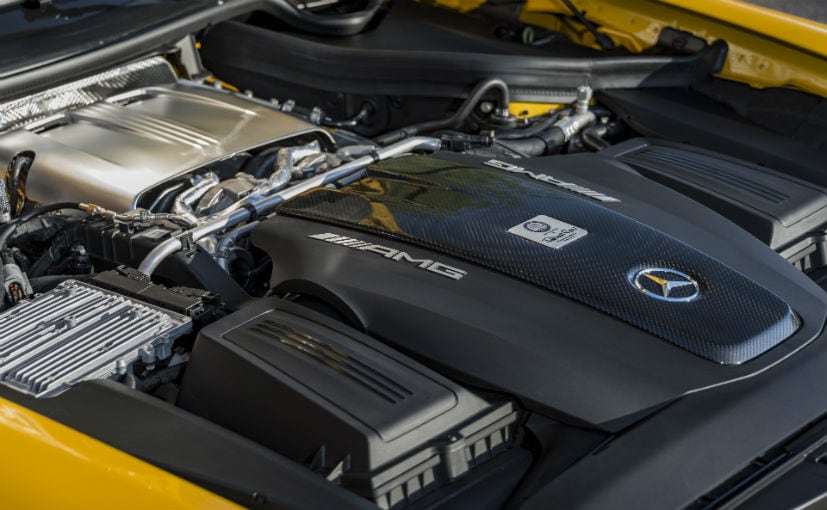
Mercedes-AMG GT C Roadster Engine
As we mentioned earlier, the GT C has a wider rear end, which means you can put down the power a lot better because of the wider tyres. There is no drama whatsoever coming out of a corner and the GT C is even more stable and has noticeable more grip than the GT S. This is mainly because of the electrically actuated get rear wheel steering. This means that upto 100 kmph, the rear wheels turn upto 1.5 degrees in the opposite direction as the front wheels effectively shortening the car’s turning radius. Over 100 kmph, the rear wheels turn in the same direction as the front ones offering even more stability and quicker high speed cornering. This of course is standard on the GT C and could be specified as an option on the base variant too.

Mercedes-AMG GT C Roadster Cornering
Now the GT part of the AMG GT means Grand Tourer and that means that the GT C Roadster has to be comfortable. While it might be more comfortable than your average Lamorghini or Ferrari, the AMG GT C Roadster is not exactly the most comfortable car out there. Being a convertible and missing the roof, the chassis is much stiffer to negate flex. And the byproduct of that is a slightly jittery ride quality with every single bump, crease and pebble on the road recognizable through the seam of your pants! Can you drive this across a 1000 kms? Well, lets just say the AMG GT C roadster is suited more to Marine Drive and not as much to National Highway 4!
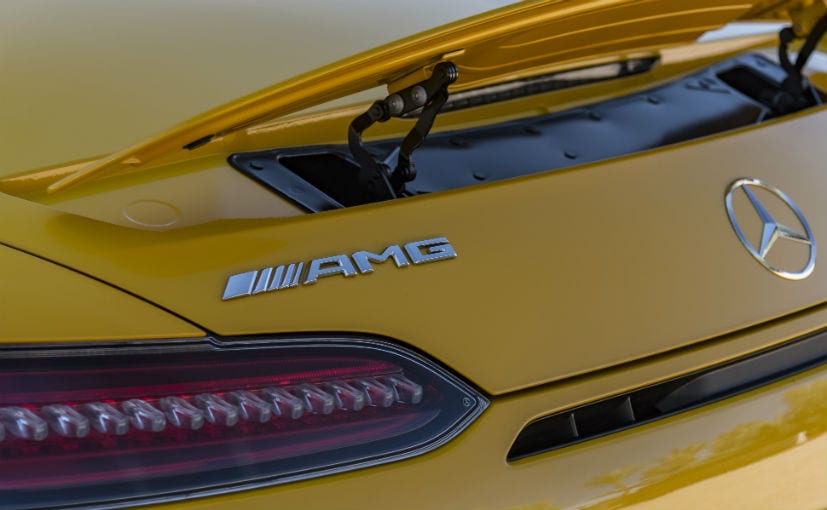
Mercedes-AMG GT C Roadster Rear Badges
The AMG GT C Roadster takes the standard AMG GT S and makes it twice better! Sadly, with all its phenomenal tech, face ripping amounts of grip and an engine that could power a Russian nuclear submarine and still have enough power to make your morning coffee, the AMG GT C is not the variant that is coming to India. Instead, Mercedes-Benz India have decided to bring in the less powerful variant of the AMG GT, which is the one with only 469 bhp. And now that we have driven the more powerful version halfway across the world, we cant wait to drive it in India. Expect a late 2017 launch and a price tag of about Rs 2.5 crore when it does make it to Indian shores.
[“source-ndtv”]